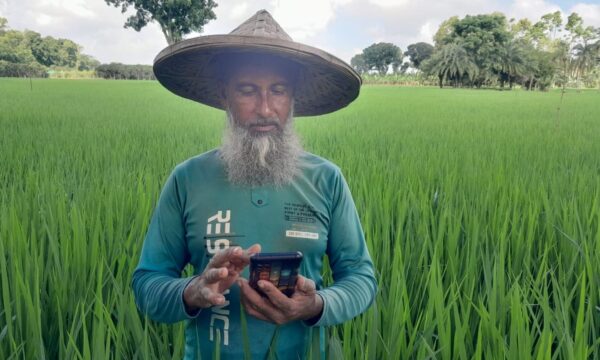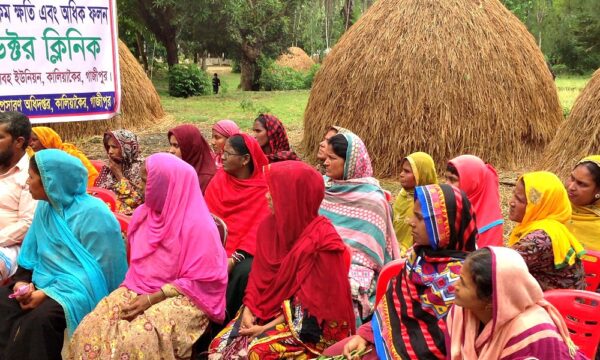The coconut hispine beetle (Brontispa longissima) is a destructive pest of palms, including coconut palms. It is a major pest in Southeast Asia, the Pacific and parts of South Asia. For several years, Bangladesh has recognized the potential threat that the beetle poses. It has worked to prevent its outbreak using a pest preparedness strategy.
Pest preparedness is a critical step in preventing the spread of plant pests and diseases. The increase in global trade and transportation has caused plant pests to spread quite rapidly. This affects food security in many countries. Moving from one part of the world to another without their natural enemies, pest species spread and thrive, becoming invasive. When established, they can cause millions of dollars in damage to food production. Globally, IPBES estimates that invasive species cause economic losses of US $423 billion a year. Preventing pest invasions can help to protect economies and prevent hunger.
In this blog, we look at steps that Bangladesh has taken to prevent an invasion of the coconut hispine beetle. CABI conducted the initiative through PlantwisePlus in 2023. The steps serve as a good example of pest preparedness and response. We see how horizon scanning led to the prioritization of this high-risk beetle. In addition, we look at actions and recommendations that resulted from the scanning exercise and pest risk analysis (PRA).
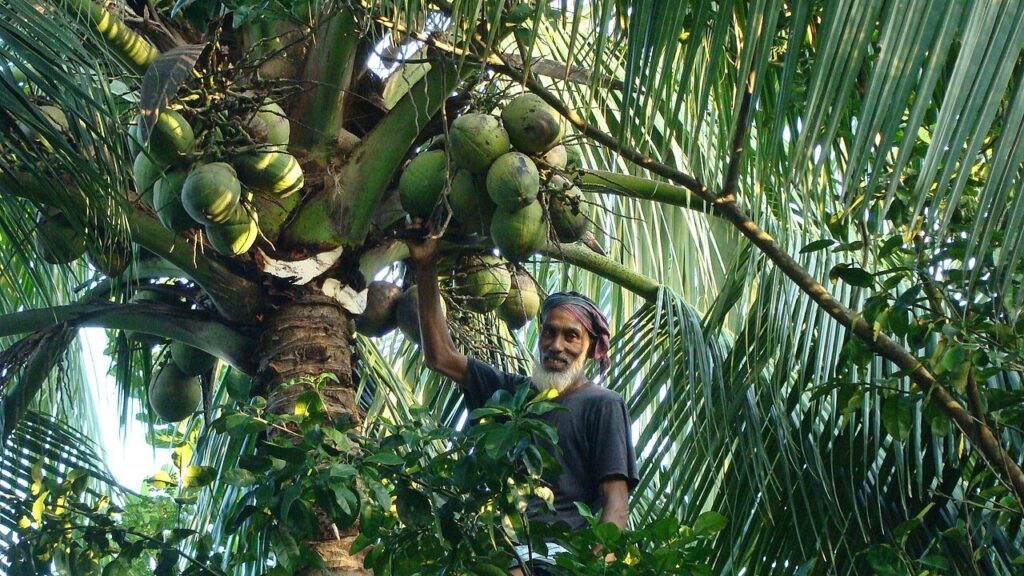
The pest risk register: Improving pest risk management
The pest preparedness and response process starts with horizon scanning and maintaining a pest risk register. This is where pest risks experts identify, rapidly assess, prioritize, record and recommend actionable measures. The prioritised pests are documented. They then continually review and update them while identifying new risks. Certain higher-risk pests can be accompanied by a comprehensive PRA if resources allow.
The authorities continually undertake surveillance. Through this, they can identify high-risk pests with the potential for introduction. They search for evidence of the presence or absence of a target pest within the country. Early detection increases the chance of an effective and timely response. Priority risks can also undergo targeted risk management activities.
Risk management must be continuous. In this way, it can be adjusted as the understanding of the changes in risk increases. Adjustments to risk management activities can then also be made. Actions can include implementing import controls and conducting border inspections. In addition, they can involve the development of contingency plans and raising public awareness through pest risk communication approaches.
Coconut hispine beetle alert: Preventing a pest invasion in Bangladesh

As part of the pest preparedness pathway, Bangladesh’s National Plant Protection Organization (NPPO) took steps to prevent an invasion of the coconut hispine beetle. Bangladesh is the twelfth largest coconut producer in the world. The country views the beetle as a high risk to the trade of this commodity. Native to Southeast Asia, the beetle damages the leaves of young palms. This reduces photosynthesis and stunts growth. Severe infestations can kill entire trees. Management includes biological control with parasitoids. Use of cultural practices and safe pesticides are part of the process to protect vital palm industries.
In 2004, neighbouring Myanmar reported the pest. Bangladesh’s NPPO then conducted horizon scanning to prioritize pest risks. Results revealed the coconut hispine beetle as a high-risk threat. A subsequent PRA further evaluated its potential to spread. It also evaluated its ecological and economic impacts. This confirmed its significant risk of invasion and potential socio-economic impacts. Coconut production losses due to the coconut hispine beetle can be substantial. Vietnam has recorded losses as high as 50% and Samoa, as high as 70%.
The horizon scanning led to recommendations for surveillance activities. These would help to detect the absence or presence of the pest covering the border areas with Myanmar. However, once conducted, authorities did not discover the pest in the observed areas. They assumed it remained absent in Bangladesh. In June 2023, they conducted a full PRA. The analysis was last updated in November 2023.
The PRA considered palm saplings imported without soil from Indonesia. It also included natural introduction from Myanmar. The movement and transfer of coconut and its associated plant parts and products into Bangladesh was also a high-risk pathway.
Next steps from the full pest risk analysis
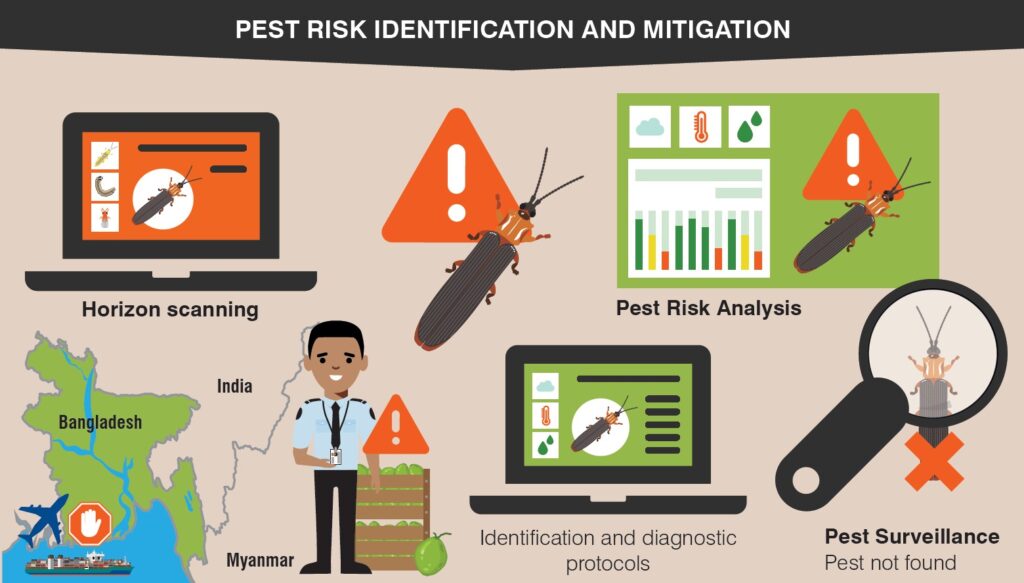
The full PRA confirmed the rapid risk rating undertaken during horizon scanning. The probability of entry, establishment and spread of the coconut hispine beetle was high. The potential economic, environmental and social consequences were also high.
A risk management summary was created. Effective risk management strategies are essential. They help to minimize the impact of the beetle on agriculture, horticulture and the overall ecosystem. Authorities put forward approaches and measures to manage and mitigate the risks associated with this invasive pest, including:
- regulatory and quarantine measures
- phytosanitary measures
- risk communication; and
- surveillance.
Under regulatory and quarantine measures, they recommended including the pest in the official list of regulated quarantine pests. Furthermore, strict quarantine was to be imposed in all airports and seaports targeting coconut and related plant parts. They also recommended thorough checking of travellers’ baggage when arriving from pest-infested countries. The recommendations made clear the importance of compliance with phytosanitary standards. For example, establishing and enforcing regulations for the importation of coconut products, seedlings and other potential host plants.
The phytosanitary measures reinforced these recommendations. Authorities were asked to verify that coconut consignments were free from the beetle. Moreover, the exporting country should be responsible for issuing a phytosanitary certificate of origin/re-export.
Communicating pest risks
Risk communication is an important part of addressing pest threats. CABI and partners implemented a communication campaign via various media channels. This raised awareness and disseminated information about the beetle among key stakeholders, including:
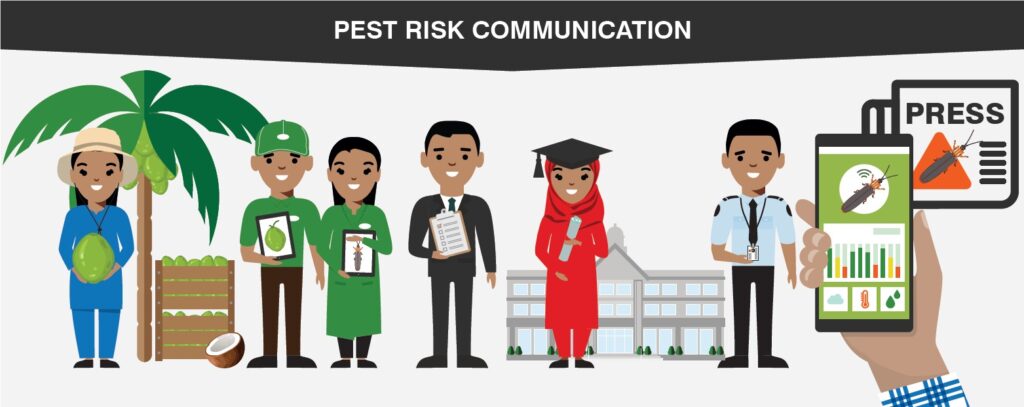
- quarantine officials
- officials from the State Department of Agriculture and Horticulture
- agricultural universities
- coconut farmers; and
- developmental workers.
Various media channels were used to increase awareness and disseminate information about the beetle among the stakeholders. This included booklets, electronic media and newspapers. Finally, frequent surveillance programmes were recommended. Monitoring and early detection can ensure the absence of the pest in coastal areas of the country where coconut is cultivated.
Successfully preventing pest threats
Bangladesh’s proactive approach has paid dividends. Measures are in place to prevent the pest’s entry into Bangladesh. Moreover, authorities have not discovered it to date. It exemplifies the importance of horizon scanning. Combined with PRA, robust preparedness approaches have reaped rewards. They have helped to prevent an invasive species from threatening vital agricultural sectors and livelihoods. Should the beetle invade in future, Bangladesh’s authorities have put mechanisms in place to prevent, detect and respond to it. The country continues regular surveillance for the pest.
Horizon scanning for climate-driven pest threats can prevent biodiversity loss
PlantwisePlus – supporting countries with pest preparedness for food security
Horizon scanning and pest risk analysis of prioritized pests in Bangladesh
Pest preparedness – boosting food security, farmer incomes and agricultural trade
What are CABI’s Horizon Scanning and Pest Risk Analysis tools, and how do people use them?
CABI leads regional workshop on Pest Risk Analysis tool in Bangladesh
CABI Working Paper 28: An assessment of the invasive species system in Bangladesh
PlantwisePlus gratefully acknowledges the financial support of the Directorate-General for International Cooperation, Netherlands (DGIS); European Commission Directorate General for International Partnerships (INTPA); UK International Development from the UK government; and the Swiss Agency for Development and Cooperation (SDC).
Related News & Blogs
PlantwisePlus marks five years of impact at FAO’s Science and Innovation Forum
On 13 October 2025, PlantwisePlus and its core donors co-hosted a networking reception at the Food and Agriculture Organization of the United Nations (FAO) headquarters in Rome to celebrate five years of the programme. Following the FAO’s Science and I…
31 October 2025


